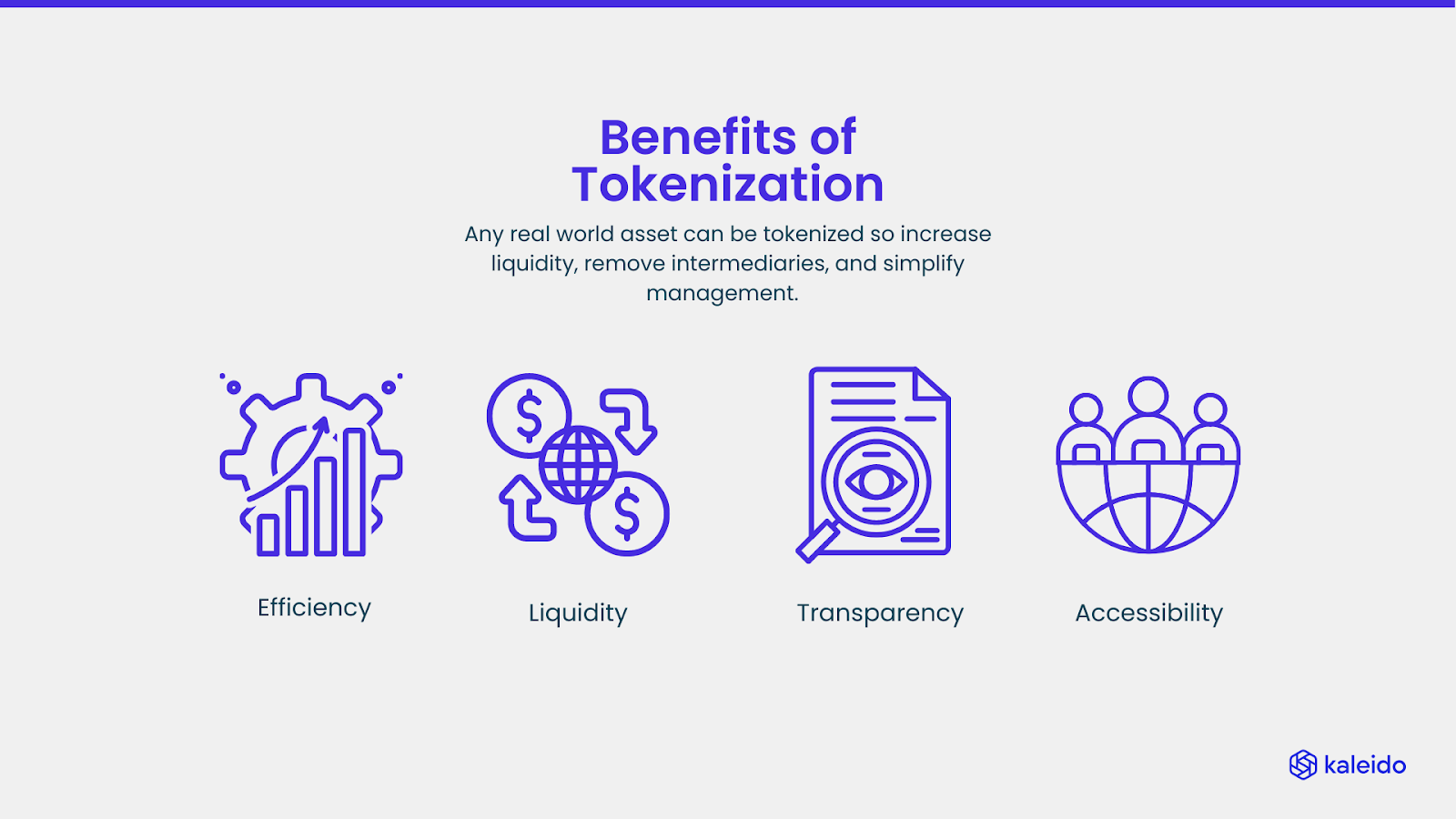The art world has long been an exclusive domain, where the soaring costs of masterpieces limit access to a privileged few. This exclusivity not only places significant barriers to art ownership for new collectors and investors but also restricts the circulation of cultural treasures to a narrow audience. But in this Web3 era, tokenization offers a solution to this problem.
Use Case: Art Ownership

Problem Statement
Art ownership is limited to the rich and famous due to its exclusivity and high price, causing a traditional barrier for new art collectors and investors.

Realization Approach
Fractional ownership can solve this problem through tokenization where investors can purchase shares in a piece of art. This would allow for a wider audience to invest in valuable artworks that were previously out of reach.

Solution Space
Fractional ownership is anchored with Blockchain technology, which ensures the authenticity, ownership, and provenance of each share, making the process transparent, secure, and efficient. It also opens up doors for newer financial instruments based on real world asset tokenization.
Featured Web3 Development Platform
Kaleido offers a tokenization platform for digital assets. Using the Kaleido Web3 gateway, developers have access to a complete stack for building and deploying secure web3 apps with simplified KYC and support for multiple chains and protocols.
The advent of art tokenization is poised to revolutionize this landscape. By leveraging blockchain technology to offer fractional ownership of artworks, tokenization democratizes access to this lucrative market.
Fractional ownership allows investors to purchase shares in a piece of art, making it possible for a wider audience to invest in valuable artworks that were previously out of reach.
As we explore the impact and potential of art tokenization, we’ll look at how it can open doors to new investors, breathe fresh life into the art market, and ensure a more inclusive future for art ownership and appreciation.
Understanding Fractional Ownership
Fractional ownership in the art market represents a transformative shift, allowing individuals to own a piece of an artwork through the purchase of shares or tokens that represent a stake in the physical piece.
This concept is enabled by blockchain, which ensures the authenticity, ownership, and provenance of each share, making the process transparent, secure, and efficient. By breaking down the financial barriers to entry, fractional ownership democratizes access to high-value artworks, enabling a broader base of investors and art enthusiasts to partake in the appreciation and enjoyment of rare and valuable pieces.
The significance of fractional ownership extends beyond making art investment more accessible. It injects liquidity into the art market, as shares of artworks can be bought and sold much like stocks in a company. This liquidity not only benefits investors looking for flexibility but also artists and collectors by potentially increasing the value and visibility of their works.
Benefits of Art Tokenization
Institutional finance and enterprises are increasingly interested in tokenized art due to several compelling reasons that align with financial and strategic objectives, namely:
Diversification of Investment Portfolios
Tokenized art offers institutions a novel asset class for investment, diversifying their portfolios beyond traditional stocks, bonds, and real estate. The unique value proposition of art as an investment, including its independence from traditional financial markets, provides an attractive hedge against market volatility.
Innovative Engagement and Branding Opportunities
By investing in or creating platforms for tokenized art, companies can position themselves as forward-thinking and innovative. This can enhance their brand image, attract a tech-savvy demographic, and open up new channels for customer engagement through exclusive access to art collections or art-related events.
Access to a Global Market
Tokenization removes geographical barriers, enabling institutions to access a global market of buyers and sellers. This broadens their potential customer base and investment opportunities, making it easier to acquire, sell, or collaborate on international art projects without the logistical complexities of physical art transportation.
Improved Liquidity and Asset Management
The fractional ownership model introduced by tokenization significantly enhances the liquidity of art assets. Institutions can more easily manage their investments by buying or selling shares in artworks without the need for a total acquisition or disposal of physical pieces. This flexibility can improve cash flow management and investment responsiveness.
Enhanced Security and Transparency
Blockchain technology, which underpins the tokenization of art, offers unparalleled security, authenticity verification, and provenance tracking. This reduces the risk of fraud and ensures the integrity of the investment, appealing to institutions that prioritize the safety and transparency of their assets.
Social and Cultural Capital
Investing in art, especially through innovative means like tokenization, allows institutions to accumulate social and cultural capital. This can enhance their reputation as patrons of the arts, supporting cultural preservation and artistic innovation, which can have positive repercussions for their corporate social responsibility profiles.

These factors combine to make tokenized art not just an investment in physical assets, but also in technological innovation, market expansion, and cultural engagement, aligning with broader strategic goals of modern enterprises and institutions.
Tokenizing Anything is Easier with Kaleido
Tokenization of assets opens new doors for financial institutions. But new concepts require intelligent tools and partners well-versed in the underlying technology. To effectively leverage the benefits of asset tokenization, institutions need a comprehensive platform capable of issuing and overseeing tokenized assets, integrating seamlessly with custody solutions and back-office operations, all while maintaining strict adherence to regulatory standards.
Also, choosing a platform that delivers enterprise-level security is crucial, as any security breach could deter investors and lead to the loss of art investments.
That’s why the Kaleido Asset Platform is the best platform for enterprises that want to tokenize artwork and manage digital assets at scale. Our platform is designed to equip you with powerful tools and versatile deployment choices, enabling the swift creation of cost-effective solutions without compromising the flexibility needed to adapt to market demands.
Kaleido simplifies the management of users, roles, access to the platform, policies, and custody arrangements, streamlining the tokenization and asset management process, and bringing this new, more inclusive art market closer to reality.
The Future of Global Art Markets
Art tokenization promises to democratize access to the art market, enhance liquidity, and provide new revenue streams for artists. By enabling fractional ownership, it lowers the barriers to entry for investors, making art investment accessible to a broader audience. Tokenization also offers a robust solution for verifying the authenticity and provenance of artworks, leveraging blockchain to foster trust and transparency in the art market.
However, challenges remain, including regulatory uncertainty, the need for technological advancements to address scalability concerns, and the cultural acceptance of digital and tokenized art as legitimate assets.
To navigate these challenges and realize the full potential of art tokenization, check out this webinar recording about how Kaleido helps companies manage tokenization at scale.
This post was originally published in Kaleido.


